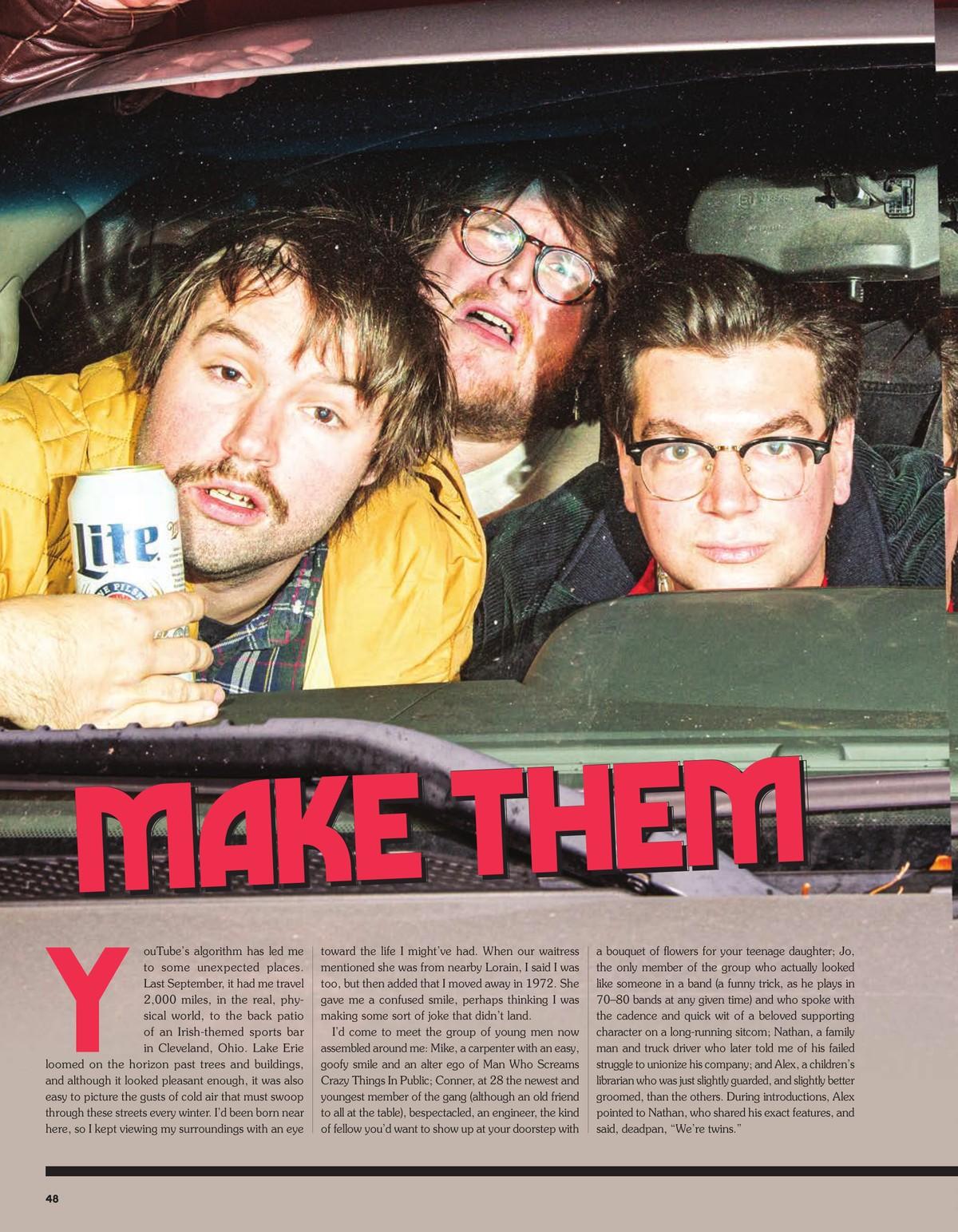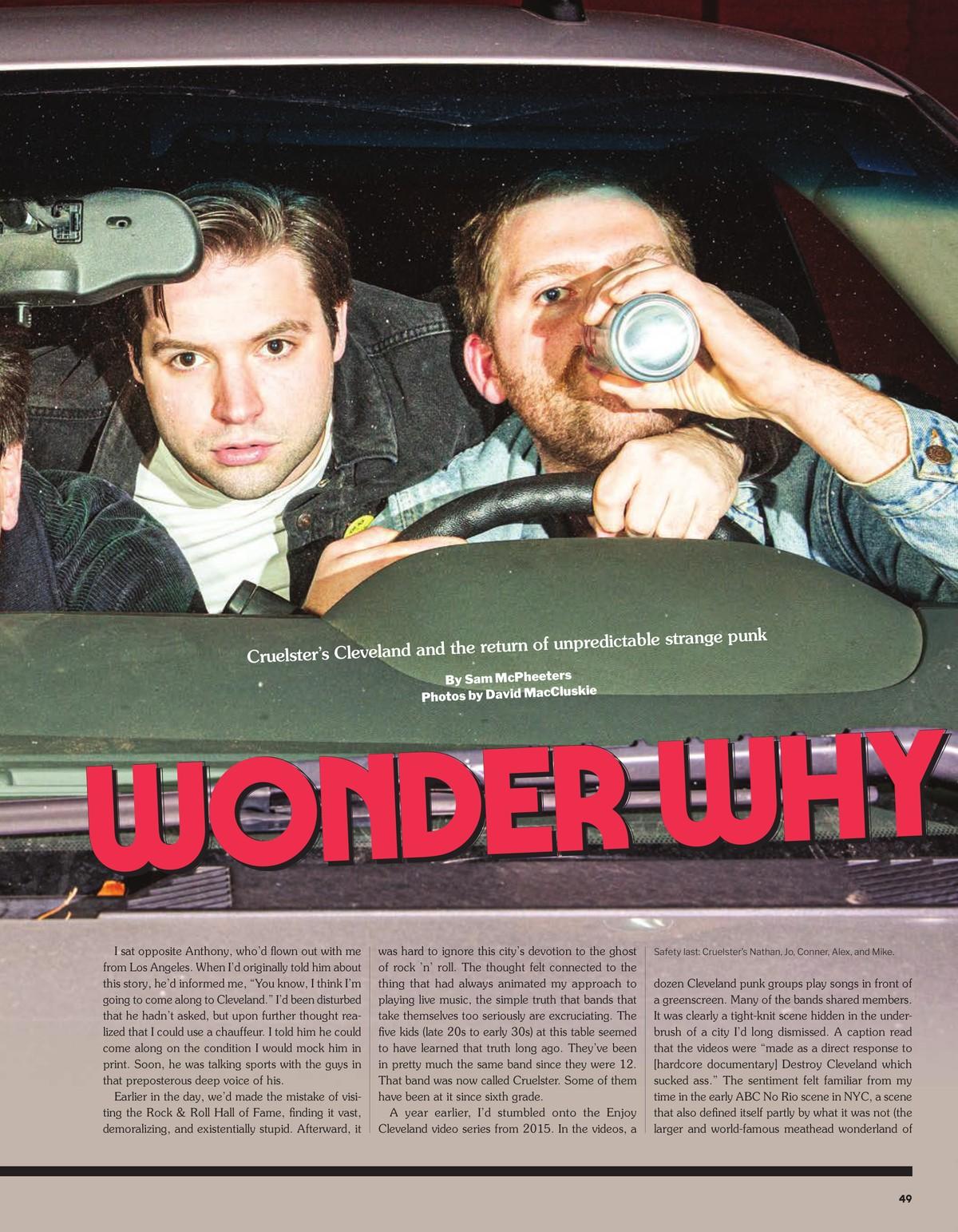Features
MAKE THEM WONDER WHY
Cruelster’s Cleveland and the return of unpredictable strange punk.


YouTube’s algorithm has led me to some unexpected places. Last September, it had me travel 2,000 miles, in the real, physical world, to the back patio of an Irish-themed sports bar in Cleveland, Ohio. Lake Erie loomed on the horizon past trees and buildings, and although it looked pleasant enough, it was also easy to picture the gusts of cold air that must swoop through these streets every winter. I’d been born near here, so I kept viewing my surroundings with an eye toward the life I might’ve had. When our waitress mentioned she was from nearby Lorain, I said I was too, but then added that I moved away in 1972. She gave me a confused smile, perhaps thinking I was making some sort of joke that didn’t land.

